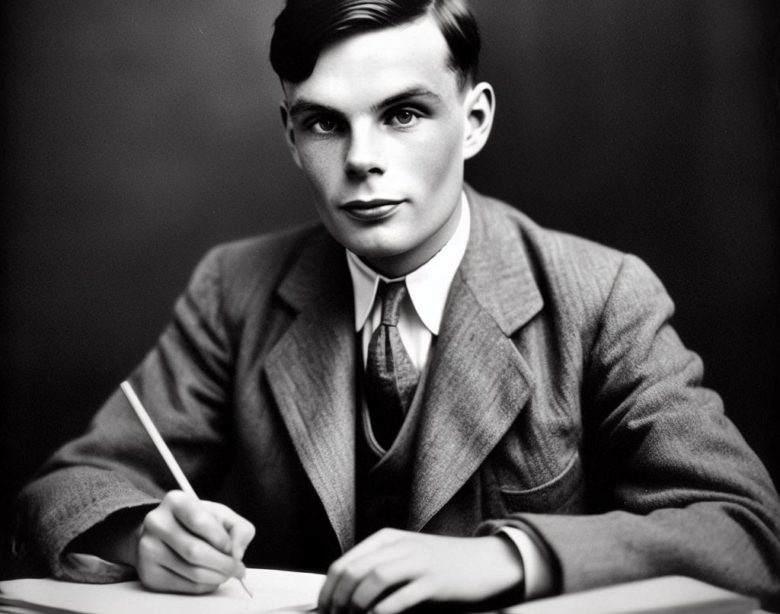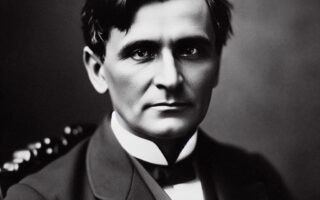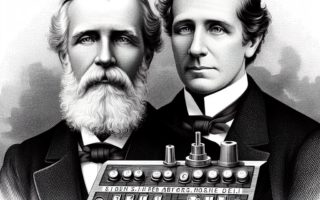In the pantheon of scientific giants, Alan Turing holds a special place—not just for what he achieved during his short life, but for how profoundly he transformed the world that followed. From laying the theoretical foundations of computer science to playing a pivotal role in the Allied victory in World War II, Turing’s legacy stretches across mathematics, logic, cryptography, biology, artificial intelligence, and beyond.
Often described as the father of modern computing, Turing’s brilliance wasn’t confined to abstract theory. His life and work exemplify how deep mathematical ideas can shape the course of history—scientifically, technologically, and even geopolitically.
Early Life and Education
Alan Mathison Turing was born on June 23, 1912, in Maida Vale, London. From a young age, he displayed extraordinary intellectual potential, particularly in mathematics and puzzles. His teachers often noted that he was different—eccentric and solitary—but deeply curious.
He attended King’s College, Cambridge, where he studied mathematics and was elected a Fellow in 1935 for his research in probability theory. But it was in 1936, while still a graduate student, that Turing would change the trajectory of mathematics forever.
The Birth of the Turing Machine
In 1936, Turing published a groundbreaking paper titled “On Computable Numbers, with an Application to the Entscheidungsproblem.” In it, he proposed a hypothetical device—now called the Turing machine—that could read and manipulate symbols on a strip of tape according to a set of rules.
This was no mere thought experiment. Turing had effectively created a mathematical model of computation, demonstrating that any calculation that could be done by a human following instructions could also be carried out by such a machine. This abstract model gave rise to the theory of algorithms and helped define what it means for a problem to be “computable.”
Turing’s work was part of a broader effort among logicians to understand the limits of formal systems, particularly in response to Hilbert’s Entscheidungsproblem—a challenge to determine whether any mathematical statement could be algorithmically proven true or false.
Turing’s answer, like Gödel’s incompleteness theorems, was sobering: no, it could not. Some problems are undecidable—there is no general method or machine that can solve them.
This insight laid the foundation for what we now know as theoretical computer science.
Breaking the Enigma: Cryptography and WWII
Though his early work was abstract, Turing’s intellect would soon be applied in the most urgent of practical circumstances.
During World War II, Turing joined the top-secret British code-breaking unit at Bletchley Park, where he led efforts to crack the German military’s Enigma cipher. The Enigma machine, used to encrypt German communications, was considered virtually unbreakable due to its massive number of possible settings.
Turing designed an electromechanical machine called the Bombe, which automated the process of testing possible Enigma settings. His insights into cryptanalysis and pattern recognition—combined with intelligence from Polish mathematicians who had worked on earlier Enigma versions—allowed Bletchley Park to decipher thousands of messages.
Historians estimate that Turing’s work shortened the war by at least two years and saved millions of lives. Winston Churchill called the codebreakers “the geese that laid the golden eggs and never cackled.” Turing was one of their most brilliant minds.
The Turing Test and Artificial Intelligence
After the war, Turing turned his attention back to theoretical questions. In a 1950 paper titled “Computing Machinery and Intelligence,” he posed a provocative question: Can machines think?
To explore this, he proposed what became known as the Turing Test. In this test, a human interrogator communicates with both a human and a machine. If the interrogator cannot reliably distinguish between the two based on their responses, the machine can be said to exhibit intelligent behavior.
The Turing Test remains a fundamental concept in artificial intelligence, raising philosophical and practical questions about consciousness, language, and the nature of intelligence. Turing foresaw many modern debates about AI long before the first neural networks or chatbots existed.
Contributions to Biology and Morphogenesis
Turing’s creativity knew no bounds. In his later years, he applied mathematical tools to biology, publishing a paper on morphogenesis—the process by which patterns in nature, such as stripes on zebras or the spiral of a seashell, develop from seemingly uniform systems.
Using reaction-diffusion equations, Turing explained how chemical substances (morphogens) could interact to form complex biological patterns. His pioneering work in this area inspired generations of biologists and mathematicians and is now considered foundational in theoretical biology and systems biology.
Persecution and Tragic Death
Despite his brilliance and his service to his country, Turing’s life was marred by tragedy. In 1952, he was prosecuted by the British government for homosexuality, which was then a criminal offense. He was offered a choice between prison and chemical castration. He chose the latter, which involved hormone treatments that had devastating physical and psychological effects.
On June 7, 1954, at just 41 years old, Turing was found dead of cyanide poisoning. Though officially ruled a suicide, the circumstances remain ambiguous. The world lost a genius far too soon.
In the decades following his death, there was a growing recognition of the injustice he suffered and the magnitude of his contributions. In 2009, the British government issued a formal apology, and in 2013, Queen Elizabeth II granted Turing a posthumous royal pardon.
In 2021, he was chosen to appear on the Bank of England’s £50 note, a powerful symbol of his enduring legacy.
Legacy and Impact on Modern Science
Today, Alan Turing is regarded as one of the founding figures of the digital age. The ideas he developed are embedded in the fabric of our world:
- Every computer, smartphone, and AI algorithm owes its conceptual lineage to the Turing machine.
- Every breakthrough in machine learning or neural networks is a step further down a path he helped illuminate.
- In biology, his work on morphogenesis continues to inspire research into pattern formation and development.
- In cybersecurity, his wartime efforts laid the groundwork for modern cryptographic analysis.
Turing’s life also serves as a reminder of how cultural prejudice can stifle brilliance.
Conclusion: The Man Who Dreamed of Thinking Machines
Alan Turing dreamed of a world where machines could think, learn, and reason. He provided the blueprint for such machines before they could even be built. He cracked codes that helped end a world war. He envisioned computers not as glorified calculators but as engines of imagination and intelligence.
Turing didn’t just imagine the future—he invented it.
As we live in a world shaped by algorithms, artificial intelligence, and information networks, we walk through the house that Turing built. His story is one of genius, tragedy, and ultimately, triumph. And while he may not have lived to see the full flowering of his ideas, the world continues to unfold the potential he first revealed.
(Posted updated in 2025.)
Please Visit Our Sponsors:
We only support vendors that we use ourselves in our home. The links below are our own links or affiliate links but know that we use all of these now, or have in the past. As the author/creator of this blog, I also tutor mathematics on Wyzant, sell on Etsy, create content on TpT, and learn Korean on Rosetta Stone.





